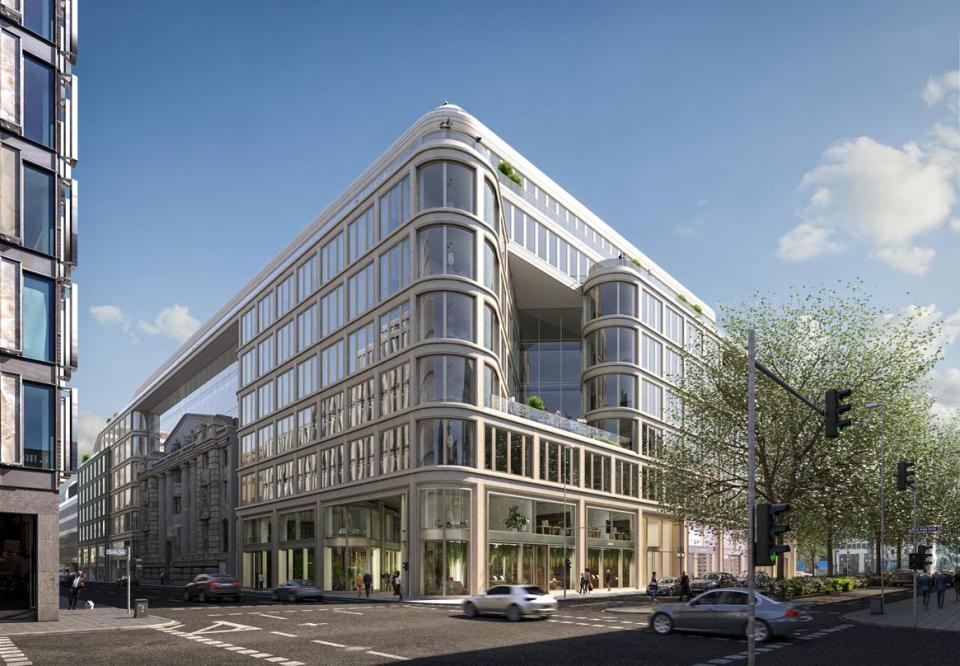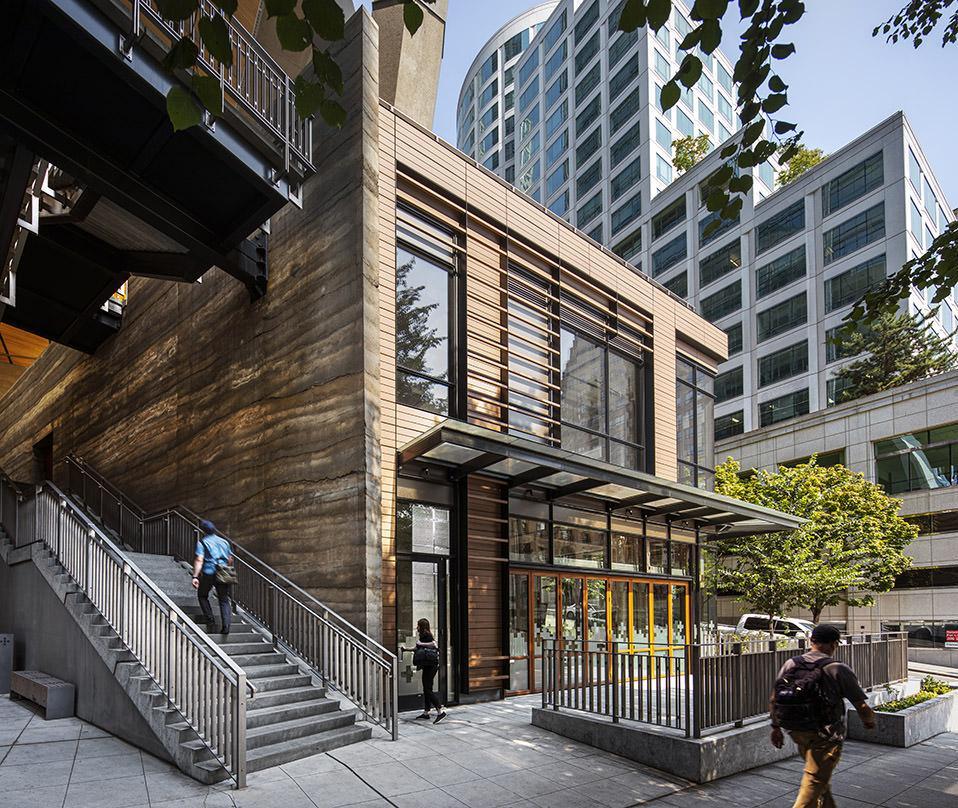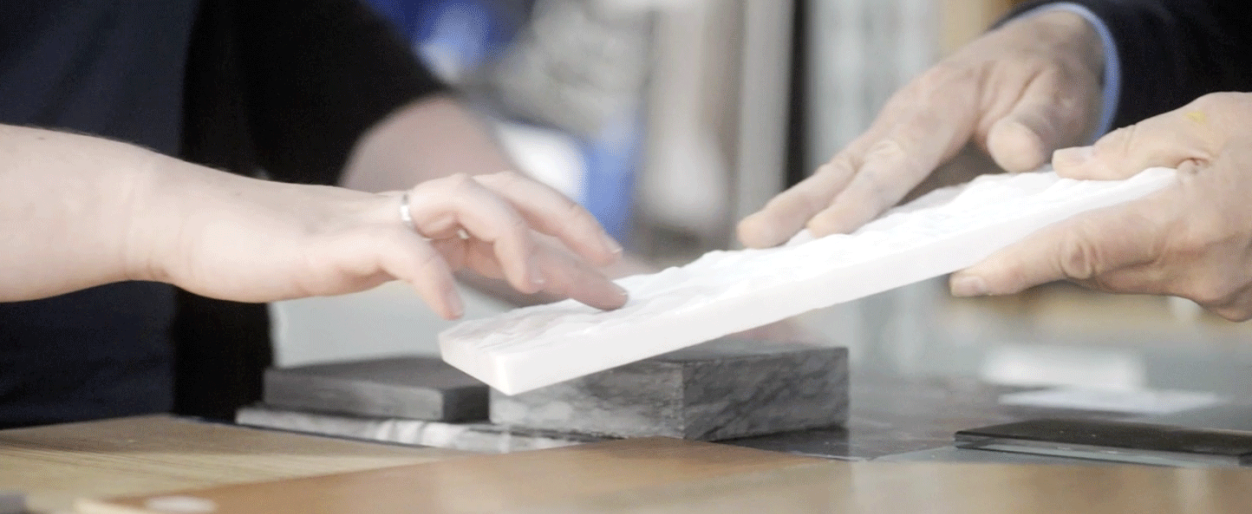Beyond the Surface: Understanding the Multifaceted Role of Texture in Design
When designing each building, our team remains involved throughout the design process, committed to finding solutions that not only meet the needs of our clients but also contribute positively to the environment and the larger community. Our aim is to craft a seamless experience, from the skyline to the smallest details, such as a doorknob. The incorporation of texture is no exception to this holistic approach; whether manifested in the facade design, the silhouette of the building, or the carefully selected materials, texture takes a multifaceted role in our designs. This exploration underscores its dual significance—functionality and the creation of a sense of belonging within the community.
The Functionality of Textured Facades: Beyond Aesthetics
At its most fundamental level, a building must serve as a functional habitat, prioritizing the safety and well-being of its occupants. Consequently, the selection of building facades undergoes a thorough review, including rigorous testing procedures. Mock-up facades, for example, undergo performance testing involving the impact of a jet turbine spraying water. This ensures the facade's resilience against various environmental conditions, a particularly critical consideration for high-wind areas and tall structures. Beyond the immediate safety concerns, the external features of a building also address broader environmental objectives, contributing to sustainability goals. The choice of facade materials and design can significantly influence the internal temperature of the building in an eco-friendly manner. For instance, the incorporation of features like fins serves the dual purpose of providing solar shading and advancing the building's environmental performance.
Placemaking and Building Identity: The Impact of Textured Facades
Every city boasts a unique architectural identity, from Dusseldorf's blend of historic and modern design to Chicago's sculptural skyscrapers. A building should seamlessly integrate into the landscape while introducing something new for the community. Designers carefully consider the pedestrian flow of the city, potentially influencing the building's structure and guiding pedestrians through curved walls. The carving of structures to harmonize with the skyline rhythm similarly prompts designers to draw inspiration from the environment when selecting textures. For instance, a glassy facade might suit New York City but may not align with Denver, Colorado, where nature takes on a larger role in daily life. Opting for textures with a more human-scale feel can create a welcoming ambiance and invite public engagement.

Tactile Aesthetics: The Physical Experience of Texture
The tactile sensation of different textures is a universally relatable experience, showcasing the interplay between smooth and rough surfaces. However, the impact of these selections relates to the overall experience of a space. Incorporating natural elements like wood and stone extends beyond aesthetic considerations, tapping into our inherent biophilic preferences and creating an environment that feels authentically inviting. A variety of textures allows us to have a sense of discovery, cutting through monotony and separating spaces in a less obstructive way than a wall might. On a more detailed level, the porous characteristics of materials come into play, directly affecting how sound and light interact with a room. Whether reflecting light to brighten a shaded area or absorbing sound in a lobby, these subtle yet intentional choices in texture underscore the profound influence it holds in shaping a space that seamlessly blends aesthetics with functionality.

Elevating Experiences Through Thoughtful Design
In the intricate process of building design, our team at Pickard Chilton remains dedicated to creating spaces that transcend mere functionality, enriching the lives of occupants and contributing positively to the environment. From the skyline to the smallest details, our commitment to a seamless experience is evident. Texture, whether expressed in facades, silhouettes, or material choices, plays a pivotal role in our holistic approach. These considerations reflect not only a commitment to safety, sustainability, and community integration but also a deep understanding of the nuanced ways textures can shape and enhance our physical and sensory interactions with space. As we navigate the dynamic intersection of aesthetics, functionality, and community impact, texture emerges as a silent yet powerful ally, contributing to the creation of purposeful, inviting, and aesthetically resonant environments.

